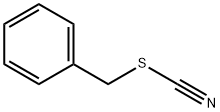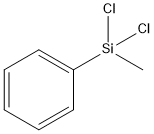A1527012
Benzyl Thiocyanate , >99.0%(GC) , 3012-37-1
Synonym(s):
Benzyl rhodanide;Benzyl thiocyanate;Thiocyanic acid benzyl ester, Benzyl rhodanide
CAS NO.:3012-37-1
Empirical Formula: C8H7NS
Molecular Weight: 149.21
MDL number: MFCD00001832
EINECS: 221-144-2
Update time: 2022-07-08
PRODUCT Properties
| Melting point: | 39-41 °C (lit.)
39-41 °C |
| Boiling point: | 230-235 °C (lit.) |
| Density | 1.32 |
| refractive index | 1.6000 (estimate) |
| Flash point: | >230 °F |
| storage temp. | Store at <= 20°C. |
| solubility | diethyl ether: soluble0.5g/10 mL, clear to very faintly turbid, colorless to almost colorless |
| form | Solid |
| color | Orange-red crystals or solid |
| Water Solubility | insoluble |
| Sensitive | Moisture Sensitive |
| BRN | 1859726 |
| CAS DataBase Reference | 3012-37-1(CAS DataBase Reference) |
| NIST Chemistry Reference | Thiocyanic acid benzyl ester(3012-37-1) |
| EPA Substance Registry System | Thiocyanic acid, phenylmethyl ester (3012-37-1) |
Description and Uses
Benzyl thiocyanate undergoes regioselective bond dissociation during its electrochemical reduction in acetonitrile at an inert electrode. It is added to stimulate the chlortetracycline biosynthesis during industrial fermentations. It undergoes biotransformation into dibenzyl disulphide by Streptomyces aureofaciens.
Benzyl Thiocyanate is found to increase the protein production of Streptomyces aureofaciens. Inhibits methylazoxymethanol acetate-induced intestinal carcinogenesis and reduces unscheduled DNA synthesi s for some genotoxic carcinogens in rats.
Safety
| Symbol(GHS) |  GHS07 |
| Signal word | Warning |
| Hazard statements | H302+H312+H332-H412 |
| Precautionary statements | P273-P280-P301+P312+P330-P302+P352+P312-P304+P340+P312 |
| Hazard Codes | Xn |
| Risk Statements | 20/21/22-32 |
| Safety Statements | 13-36/37-50A |
| RIDADR | UN 1759 8/PG 2 |
| WGK Germany | 3 |
| RTECS | XK8155000 |
| TSCA | Yes |
| HazardClass | 6.1 |
| PackingGroup | III |
| HS Code | 29309070 |
| Toxicity | LDLo ipr-rat: 40 mg/kg ARZNAD 16,870,66ipr-mus LD50:17 mg/kg PCBPBS 2,95,72scu-mus LD50:100 mg/kg JJPAAZ 3,99,54 |




